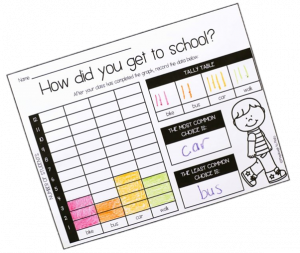Let the ruler be the yard stick for this scavenger hunt.
math-measuring-scavenger-hunt (PDF, 30kB)
Mötespunkt för pedagoger att dela naturvetenskapliga idéer
Let the ruler be the yard stick for this scavenger hunt.
math-measuring-scavenger-hunt (PDF, 30kB)
En bunte med utmanings-kort vad du kan klara av att bygga i Lego.
Övning i att ta till sig instruktioner och omsätta det till någon slags lego konstruktion.
STEM LEGO Utmaning (PDF, 534 kB)
Utforska de 5 sinnena
Detta är det perfekta tillfället att prata om kroppens fem sinnen!
KÄNSEL | SMAK | LJUD | SYN | LUKT
Få alla att prata om hur varje äpple smakar, luktar, känns och låter när man tuggar det!
Beskriv hur äpplet ser ut med din synförmåga. Vilken färg har skalet? Vilken färg har fruktköttet? Vilken form är det? Jämför äpplets färger och storlekar.
Beskriv hur äpplet känns med din känsel. Hur känns det? Känns det fuktigt eller torrt? Slätt eller grovt? Mjukt eller hårt?
Beskriv hur äpplet luktar med ditt luktsinne. Jämför lukten av de olika äpplena.
Sedan vidare till den bästa biten… smaktesta varje äpple! Beskriv hur äpplet smakar med ditt smaksinne, och hur det låter med ditt ljudsinne. Blunda när du smaktestar och se om det gör någon skillnad att observera.
Om du vill kan du använda det här arbetsbladet för att dokumentera experimentet: Äppelvetenskap arbetsblad (PDF, 242 kB)
Exploring the 5 senses
This is the perfect opportunity to talk about the body’s five senses!
TOUCH | TASTE | SOUND | SIGHT | SMELL
Get everyone talking about how each apple tastes, smells, feels, and crunches!
Describe what the apple looks like with your sense of sight. What color is the skin? What color is the flesh? What shape is it? Compare the apple colors and sizes.
Describe what the apple feels like with your sense of touch. What does it feel like? Does it feel wet or dry? Smooth or rough? Soft or hard?
Describe what the apple smells like with your sense of smell. Compare the smell of the different apples.
Then on to the best bit… taste testing each apple! Describe what the apple tastes like with your sense of taste, and what it sounds like with your sense of sound. Close your eyes when you are taste testing and see if that makes a difference observing.
En skattjakt kan vara ett roligt sätt att testa i vilken uträckning barnen har tagit till sig ett ämne. Jag har två möjliga, båda på STEM temat (STEM= Vetenskap, teknik, ingenjörsvetenskap och matematik).
Den ena är i format av en lista den andra är med bilder.
STEM Skattjakt (PDF, 134 kB)
Man kan ju även göra det här till en ledd aktivitet för att introducera tänkandet och hjälpa till att hitta vad som finns.
Some scavenger hunts can always be a fun way to test and see if the children has a conception of the subject matter.
I have found two good ones:
STEM-Building-Challenge-and-Scavenger-Hunt-Frugal-Coupon-Living (PDF 281 kB) This one includes some building challenges also. It was found from Frugal Coupon Living where you can find a whole lot of other resources.
The other one is a JPG. (Click on it for more proper size)
Gör ett kort för varje barn – varför inte låta dem rita sig själva?
Om man sedan gör en snygg tavla som den här nedan eller bara sätter upp dem med häftmassa spelar ingen roll

När sedan alla har satt upp sitt kort kan man sammanställa statistiken på ett separat papper:
Om du vill ha en färdig kan du använda den här: Sammanställning av graf (PDF, 92 kB)

Make a card for each child – why not let them draw themselves?
It doesn’t matter if you make a nice board like the one belowor just stick them up with blue tac.

And, when all have put up their picture can you summarize it on a separate sheet:

Var kreativ och skapa konst av dina naturmaterial. Bygg en skulptur, gör en tavla eller designa en natur-mandala. Kan du göra ett självporträtt eller en skulptur?
Försök att använda så många naturliga föremål som möjligt som pinnar, löv, stenar, bark, vass och allt annat du har runt området! Gå på skattjakt i naturen och ta en papperspåse för att samla godsaker.
Du kan behöva använda snöre eller garn sparsamt, men kom ihåg att inte skräpa ner och ta med dessa extra förnödenheter tillbaka in!
Gör ditt bästa för att inte använda konstgjorda material.
Uppmuntra barnen att inte plocka löv från träd eller bryta grenar från träd. Använd föremål som redan finns på marken så mycket som möjligt.
Build a sculpture, make a picture, or design a mandala with nature. Can you make a self-portrait or build a sculpture?
Try to use as many natural items as possible such as sticks, leaves, rocks, bark, reeds, and anything else you have around the area! Go on a nature hunt and take a paper bag to collect goodies.
You may need to sparingly use string or twine, but please remember not to litter and bring these extra supplies back inside! Do your best not to use any man-made materials!
Encourage kids to not pick leaves off trees or break branches off of trees! Use items that are already on the ground as much as possible!